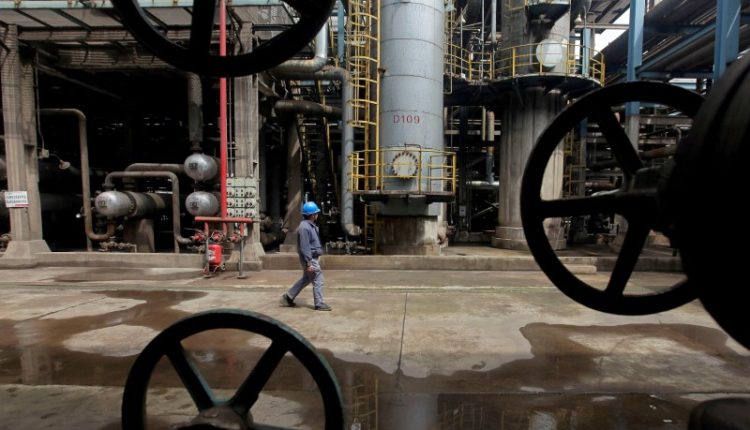© Reuters. FILE PHOTO: Oil, miniatures of oil barrels, oil pump jack and U.S. dollar banknote are seen in this illustration taken, June 6, 2023. REUTERS/Dado Ruvic/Illustration/File Photo
By Stephanie Kelly
NEW YORK (Reuters) -Oil prices rose on Friday to their highest in over half a year and snapped a two-week losing streak, buoyed by expectations of tightening supplies.
Saudi Arabia is widely expected to extend a voluntary 1 million barrel per day oil production cut into October, prolonging supply curbs engineered by the Organization of the Petroleum Exporting Countries (OPEC) and allies, known collectively as OPEC+, to support prices.
Russia, the world’s second-largest oil exporter, has already agreed with OPEC+ partners to cut oil exports next month, Deputy Prime Minister Alexander Novak said on Thursday.
settled up $1.66, or 1.9%, at $88.49 a barrel. Earlier it gained to a session high of $88.75 a barrel, the highest since Jan. 27.
U.S. West Texas Intermediate crude (WTI) had risen $1.39, roughly 1.7%, to $85.02. It rose earlier to $85.81, the highest since Nov. 16.
Brent rose about 4.8% this week, the most it has increased in a week since late July. WTI advanced by 7.2% in the week, its biggest weekly gain since March.
“There is a realization the economy is not falling off the map, and signs that demand is near record highs,” said Price Futures Group analyst Phil Flynn. “People have to face the cold, hard reality that supplies are below average.”
The appetite for oil in the United States has been robust, with commercial crude inventories declining in five of the most recent six weeks, according to surveys conducted by the U.S. Energy Information Administration.
A keenly watched U.S. report on Friday also showed a rise in the unemployment rate and moderation in wage growth, bolstering expectations of a pause in interest rate hikes.
Meanwhile, expectations for demand recovery elsewhere are growing.
A downturn in euro zone manufacturing eased last month, suggesting the worst may be over for the bloc’s beleaguered factories, while an unexpected rebound in China offered some hope for export-reliant economies, private surveys showed.
Both OPEC and the International Energy Agency are depending on the world’s biggest oil importer, China, to shore up oil demand over the rest of 2023, but the sluggish recovery of the country’s economy has investors concerned.
The remainder of this year promises to bring supply shortage, partly owing to reasonably healthy global consumption and partly because of the Saudi determination to provide a high price floor, said Tamas Varga of oil broker PVM.
“Unless the Chinese economy stages a confident revival next year, the mood will sour markedly,” he said.
In an indication of future supply, U.S. oil rigs were unchanged at 512 this week, the measure holding at its lowest level since February 2022, energy services firm Baker Hughes said on Friday.
Read the full article here

